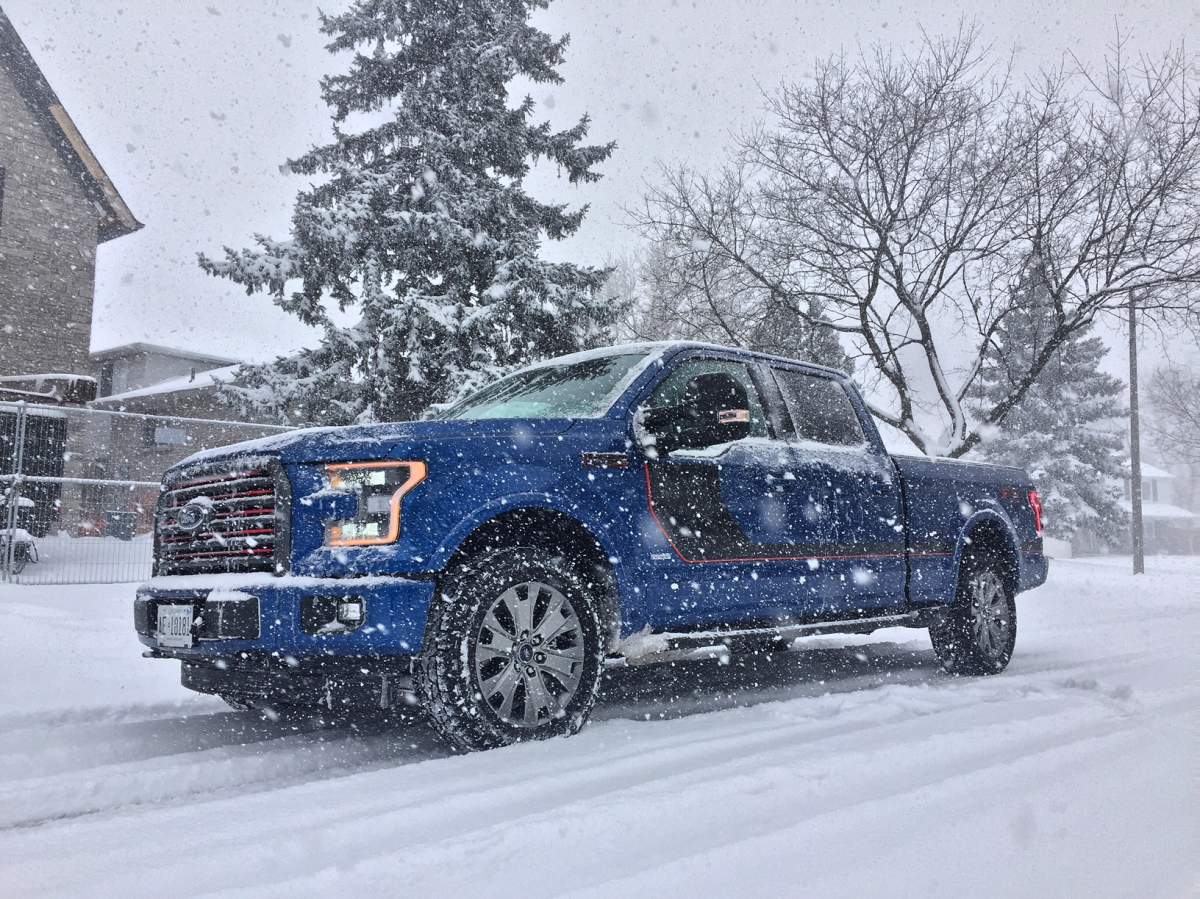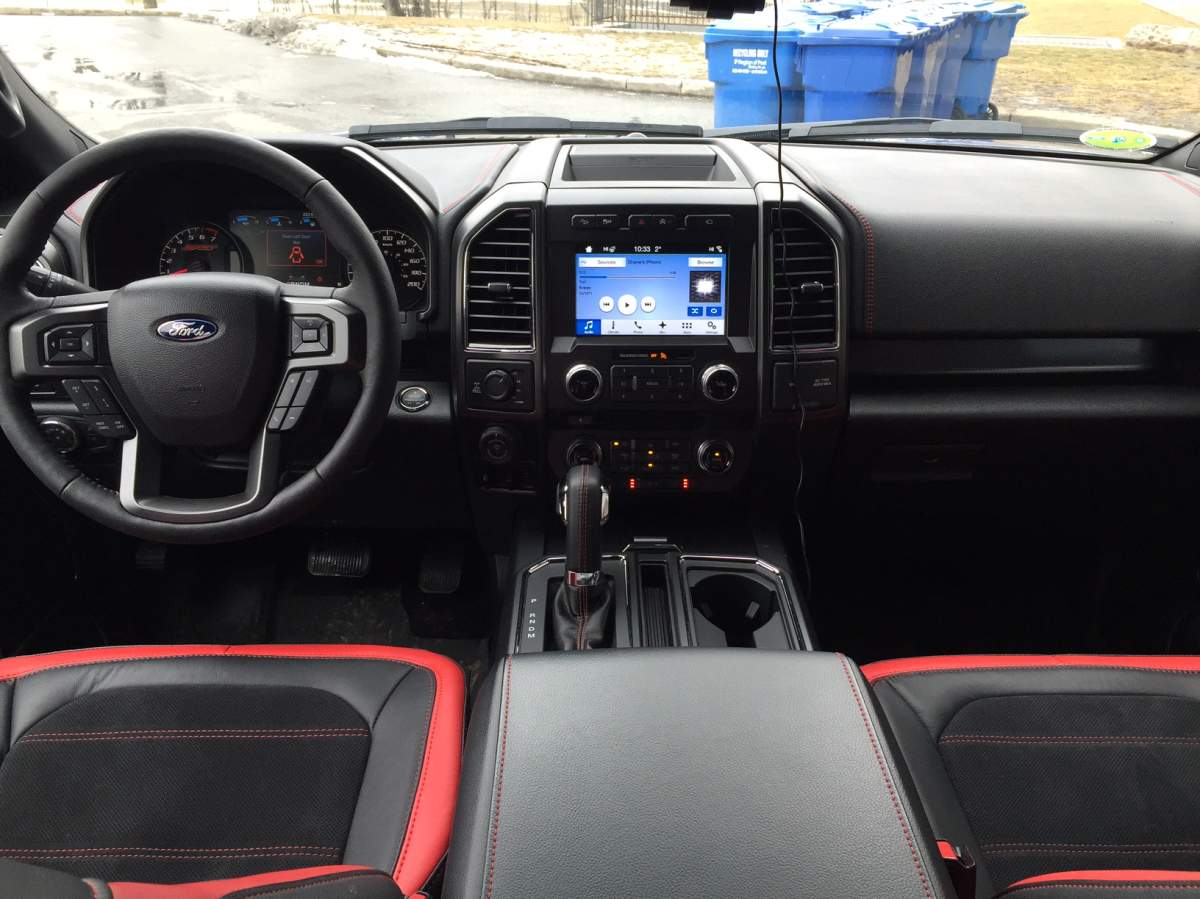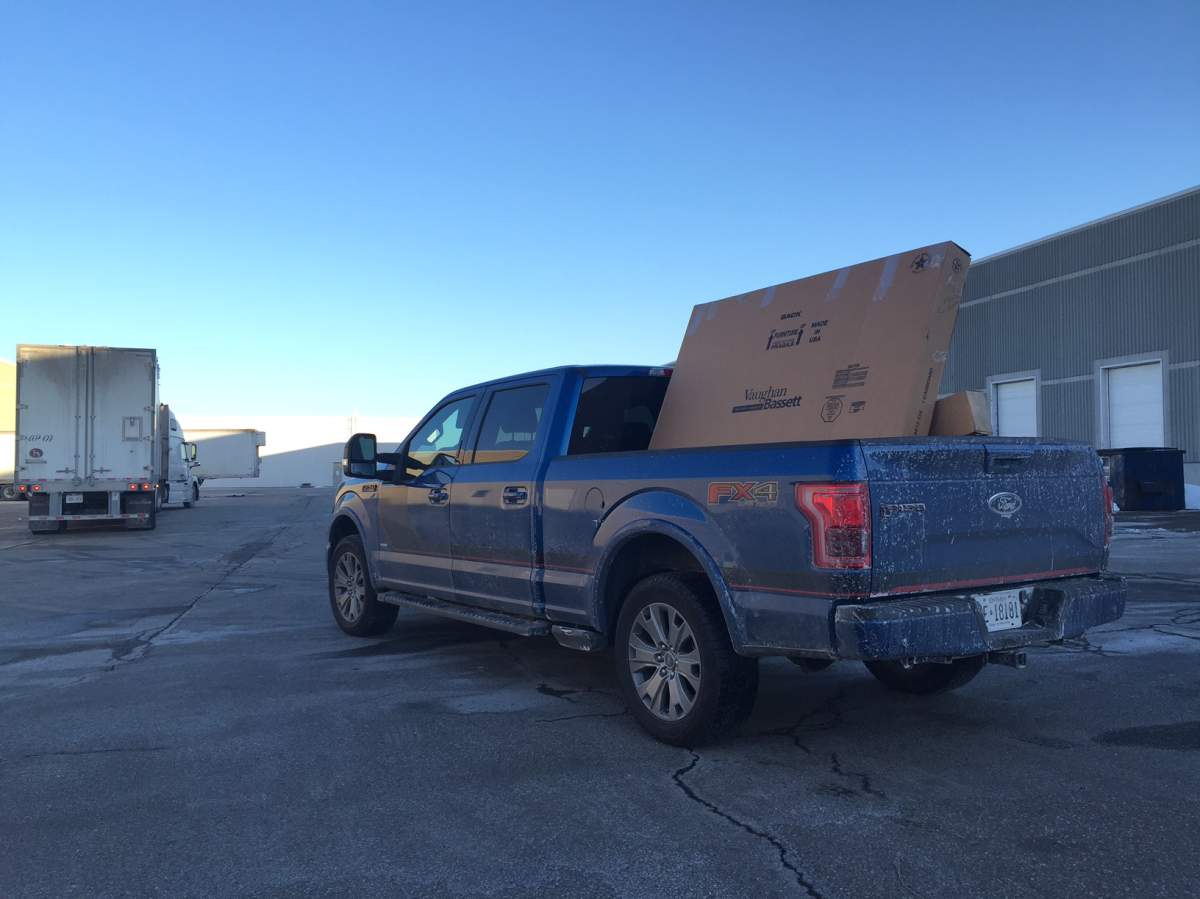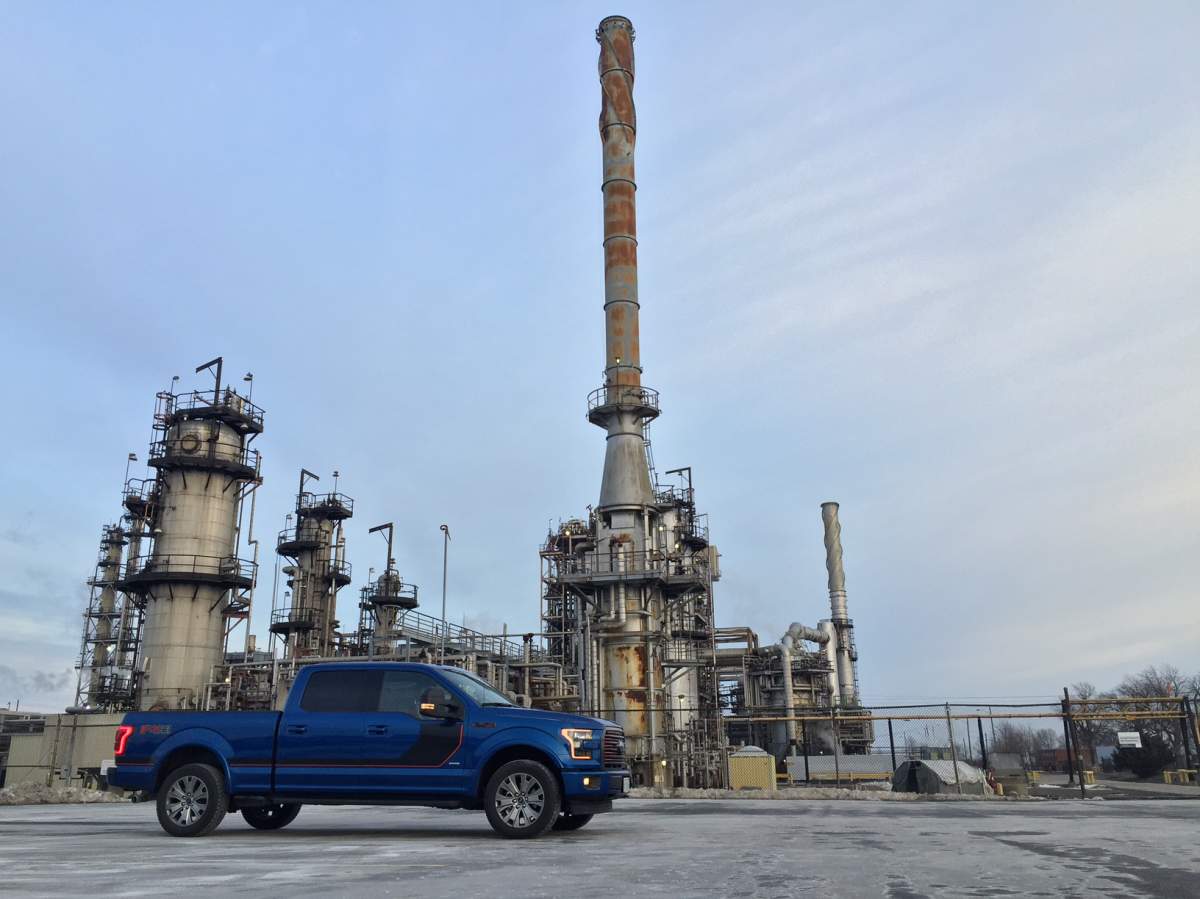Despite a seemingly never ending rise in fuel prices in our country, one rather large and heavy vehicle has sat on top on the Canadian market for nearly a decade: the Ford F-series pickup truck.

In fact, Canadians seem to have a love affair with gas guzzlers. Of the top 10 selling vehicles of 2016, just three of them were compact economy cars. But none of those come close to the eight year reign Ford’s F-series has enjoyed.
So can this new F-150 help Ford continue that stranglehold? We put it to the test.
As part of a new series reviewing autos, Global News put the all new Ford F-150 EcoBoost to the test
What’s new this time?
Ford made a bold statement back in 2014 when it announced all F-series pickups would be constructed almost entirely of aluminum. Aluminum is lighter and easier to recycle, which should hopefully translate to a more fuel-efficient vehicle that leaves a smaller environmental footprint.
This time around, the company is attempting to up the ante with an all-new 10-speed gearbox that was co-developed with rivals General Motors.
This new transmission is paired exclusively with a 3.5-litre turbocharged V6 engine that Ford says is better in every way than the V8 engine it replaces. While it may not excite the same way an eight-cylinder engine will, Ford claim this V6 engine is lighter, more powerful, better on fuel and offers more towing capability than the outgoing V8.
READ MORE: 2016 Ford Mustang Shelby GT350 review: Old school charm in a modern package
Does it work?

Get breaking National news
Although it’s not initially overwhelming, the new gearbox and engine do make for an improvement.
Compared to the current F-150, drivers should expect an increase of one mile per gallon, or a return of 11.7 litres per 100 kilometres, versus the current 13 L/100 km. The new configuration also claims to add 10 more horsepower, 50 lb-ft of torque and an increased towing capacity over its replacement.
But for those that buy a pickup truck as a daily driver (of which there are many), figures like towing capacity and torque don’t matter as much as a smooth, comfortable ride. Luckily for them, this 10-speed gearbox is very smooth indeed. Because the truck now has so many gears to work with, RPMs are kept low, often below 2,000 at highway speed. Drivers will notice the transmission quickly changing between gears, but they won’t feel any rough clunking.
As for the engine, a V8 pickup truck is as American as apple pie and baseball, but this V6, from a numbers standpoint at least, does a better job. Stomp the gas and the F-150 will rocket you forward faster than you might realize. Ford knows people will miss a big engine however. The auto giant attempted to work around that by artificially piping in a V8 engine note into the cabin through the speakers, but it’s not nearly as impactful as they may have hoped.
How much will this cost me?
Part of the reason the F-series line of pickup trucks is such a hot seller is that it can work with a wide variety of budgets. The cheapest F-150 starts at a relatively modest $28,249. But that price skyrockets to $73,149 at the top of the range – and that’s before any options, fees and taxes.
The new 10-speed transmission and EcoBoost engine, the focus of this review, will set buyers back at least $32,299 for the “XL” trim level. Depending on needs and tastes, that cost can quickly rise. Our tester, fitted with options like a leather interior, heated steering wheel, blind spot monitoring and a 360-degree camera, pushed the final cost to nearly $76,000.
READ MORE: 2017 Honda Civic Hatchback review: Bestseller gets better
Bottom line?
Ford made a big step forward when it decided to re-body its F-150 in aluminum. While some competitors saw it as a sign of weakness, in reality, it’s a likely next step for virtually all large pickup trucks as fuel economy standards become tighter and tighter. The lighter aluminum body, now paired with a more efficient engine and transmission, won’t suddenly make the F-150 into an efficient fuel-sipping vehicle, but it’s a welcome refinement on a truck that has already found a home in the driveways, construction sites and businesses of so many Canadians.











Comments